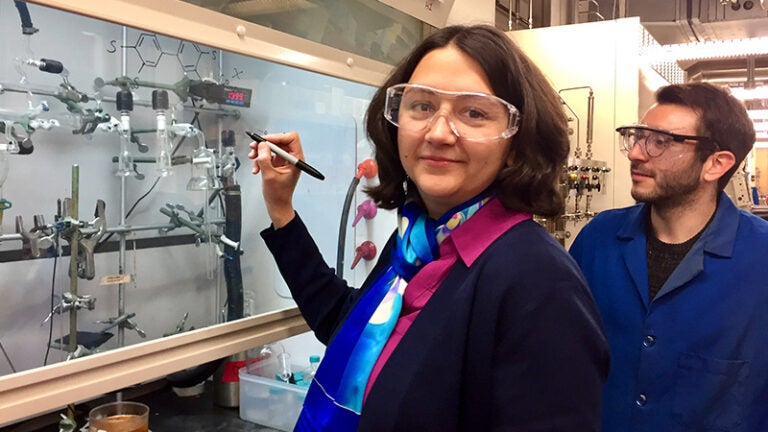
Childhood interest in chemistry leads to studies of large-scale energy solutions
While an eighth-grader in Romania, Smaranda Marinescu hungered to try out for a coveted spot in a National Chemistry Olympiad. A chemistry teacher, recognizing Marinescu’s talent and drive, encouraged the young scientist and provided practice tests.
The teacher also took an extraordinary step.
“She gave me the keys to the lab and said, ‘Go have fun,’’’ Marinescu said. With the freedom to experiment with mixing different chemicals on her own, the intrepid student mastered the basics and moved on to compete in that Olympiad as well as others through her high school career.
While much has changed in her life, her zest for chemistry has not. “I really enjoyed making molecules then, and that’s what I do now,” said Marinescu, Gabilan Assistant Professor of Chemistry at USC Dornsife College of Letters, Arts and Sciences.
A 2019 Alfred P. Sloan Research Fellow, she studies ways to gather energy harvested from sunlight and store it as chemical energy — much like plants do through photosynthesis.
“One hour of sunlight provides more than all of the energy consumed by the planet in one year,” she said. “We need to develop methods to capture solar light and store it efficiently so that we can use it at night when we need it.”
Marinescu and her team are working to convert stored energy into electricity by using what are called metal-organic frameworks. These flexible, ultra-thin and highly porous crystalline structures have unique properties that may one day efficiently store renewable energy at a very large scale.
Her research also might help combat catastrophic effects of climate change. With global annual energy consumption projected to grow 50 percent within 30 years, the need for renewable non-fossil fuel technologies is not only urgent, but it is also driving innovation and investment dollars, Marinescu said.
Finding efficient solutions that have the potential to be scalable presents a challenge in sustainable energy research. Scientists must develop catalysts that are not only active and selective for one particular reaction, but also contain only inexpensive elements.
Following cues from nature, Marinescu has developed materials that contain biologically available elements and structural features and facilitate the conversion of abundant small molecules into chemical fuels.
“What I really enjoy is coming up with new solutions. Developing metal complexes and materials that display unique physical and chemical properties is very exciting, and this keeps me going.”
Marinescu completed her undergraduate studies at Caltech, where she conducted research in organometallic and organic chemistry. After graduating, she attended MIT, where she worked on olefin metathesis, receiving her Ph.D. in 2011. Returning to Caltech as a postdoctoral scholar, she investigated the mechanism of hydrogen formation with a cobalt catalyst. She launched her independent career at USC Dornsife in 2013.
A recipient of an NSF Career Award in 2016, Marinescu created a mentoring program that pairs incoming female graduate students with more experienced female classmates to foster friendship and support.
While the ratio of women to men in graduate chemistry is roughly 50-50, female representation drops off precipitously at the postdoctoral and faculty levels. By providing a women-specific mentoring program to facilitate female-to-female peer networking and mentorship early on, she hopes to help increase participation of this underrepresented group in science.
“They get the chance to talk and connect with somebody right away to ask questions about picking classes or choosing a lab and so on,” she said. “Then they have a friend right there who can show them the ropes and provide support.”